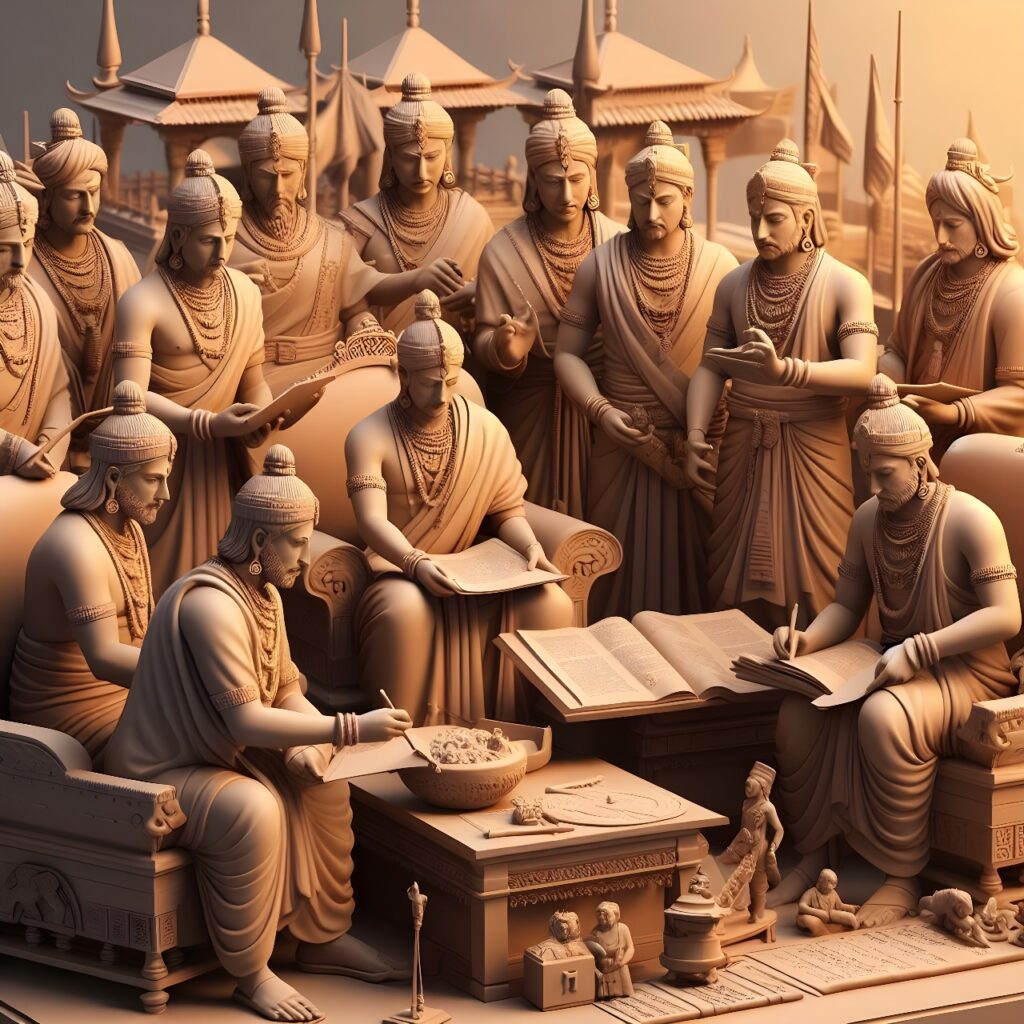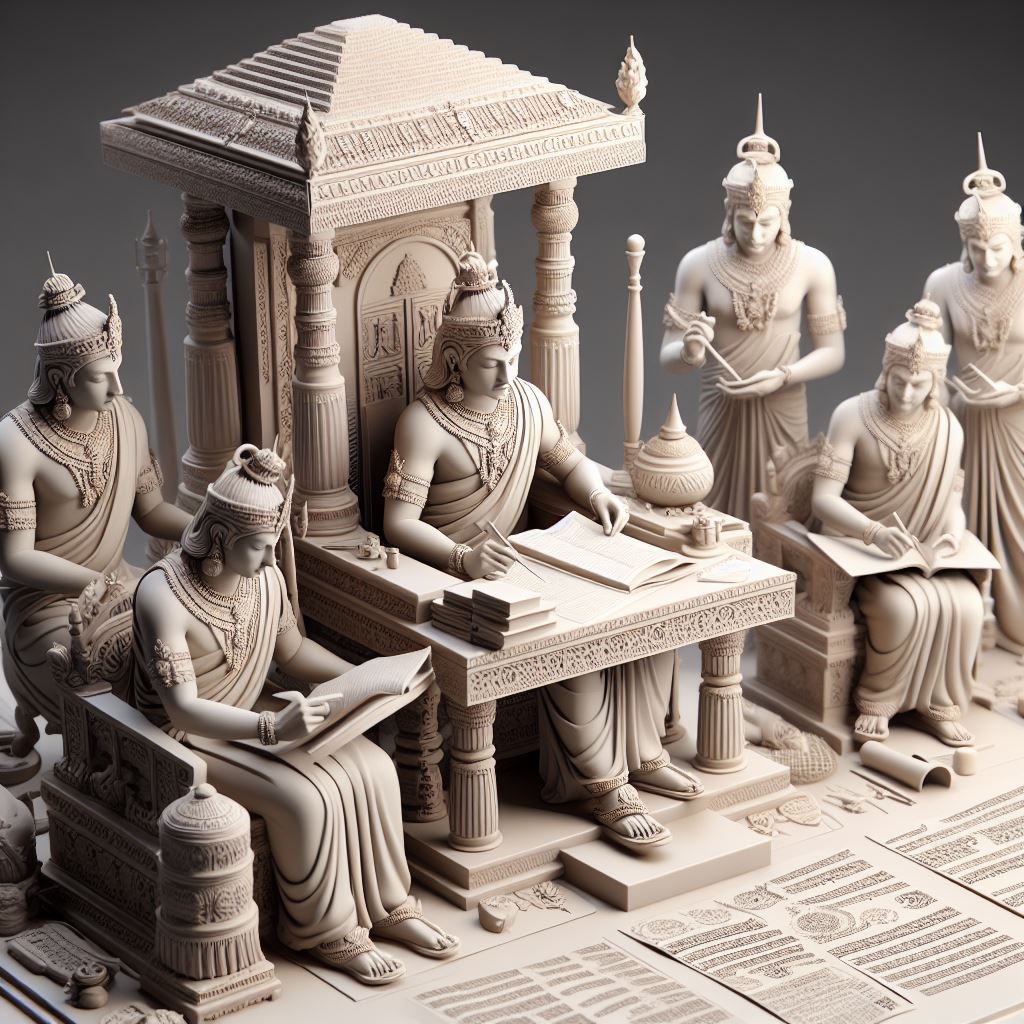Table of Contents
The Chola Dynasty and the Education System: Revealed
The Chola dynasty, which thrived in ancient India, left behind a vibrant heritage that has influenced the country’s history, art, and literature. One of the remarkable aspects of the Chola dynasty was its unique and progressive education system. This blog will delve into the educational practices of the Cholas, highlighting the role of temples and monasteries, the priests as educators, the languages of instruction, and the impact of the educational system on society and culture. We will also explore the dynasty’s contributions to the arts and literature and the lasting influence of their educational practices on modern educational institutions. The development of Chola literature, art, and architecture had a significant impact on the cultural development of the Tamil country.
The Chola Dynasty: An Overview

The Chola dynasty, also known as the Tamil dynasty, which spanned from the 9th to the 13th century CE, was one of the most illustrious dynasties of ancient India. Under the rule of kings like Vijayalaya Chola, Rajaraja Chola, and Kulothunga Chola, the empire reached its zenith of power and influence. The empire expanded its territories, defeated rival dynasties such as the Pala dynasty and the Eastern Chalukyas, and established strong governance and trade networks.
The Tamil dynasty, originating from southern India, is renowned for its maritime empire known as the Chola empire. Later Cholas, such as Vikrama Chola, continued the dynasty’s legacy by conquering regions like Kalinga, Ilam, Kataha, and the fertile valley of the Kaveri River. The Kaveri River, located in the heartland of the Cholas, played a crucial role in their dominance and prosperity. However, they faced setbacks when they lost control of Vengi to the Western Chalukya and Gangavadi to the Hoysala Empire around 1118.
Rise of the Chola Dynasty
The history of the Chola kingdom traces back to the reign of Vijayalaya Chola, who ascended to power in the 9th century in present-day Tamil Nadu. He laid the foundation for the empire and expanded its territorial influence. However, it was under the rule of Rajaraja Chola and his successors that the Chola dynasty reached its pinnacle of power and prosperity.
The empire witnessed significant advancements in governance, architecture, and literature during this period. The reign of Kulothunga Chola marked the dynasty’s dominance and territorial expansion, with the empire reaching parts of Southeast Asia and Sri Lanka. The Chola rulers were constructors who viewed the temples within their realms not just as religious sites but also as centres of economic activity.
Decline of the Chola Dynasty
Like all dynasties, the Cholas also faced their share of challenges and eventually experienced a decline. Internal unrest and external invasions, coupled with the empire’s vast and diverse territories, contributed to the dynasty’s downfall. The later Cholas lost control of certain territories, and the empire fragmented. Despite the decline, the Cholas left a lasting legacy in the fields of art, architecture, literature, and Pandya, which still resonates in the present day.
The Unique Education System of the Cholas

Education and the dissemination of knowledge played a crucial role in the Chola dynasty. Their educational system considered progressive and inclusive for its time, contributed significantly to the empire’s social, cultural, and intellectual development.
Role of Temples and Monasteries
Temples and monasteries served as the epicentres of education and knowledge during the early Chola era. The dynasty endowed these institutions with resources and patronage, establishing them as educational centres. Scholars and sages congregated in these sacred spaces, fostering intellectual and spiritual growth. The temple architecture of the early Cholas reflected their dedication to promoting education and culture, with magnificent temples such as the Brihadeeswarar temple in Thanjavur, which is a UNESCO World Heritage Site and a testament to the grandeur of the Chola kings.
In addition, the early Chola temples were found at Narthamalai and Kodumbalur in Pudukottai district and at Srinivasanallur in Tiruchirappalli district. The Cholas also established the Vaishnava Centre at Ennayiram, which functioned as a hub for learning. This centre housed 340 students studying the Vedas, Grammar, Vedanta, and inscription under the tutelage of 14 teachers.
Priests as Educators
Priests played a crucial role in the educational system of the Cholas. They not only fulfilled their religious duties but also assumed the role of educators, imparting knowledge and moral teachings to the populace. The priests were instrumental in teaching religious scriptures, rituals, and ethical principles, and their influence extended beyond religious instruction, encompassing various academic disciplines. Under the patronage of the Chola rulers, the priesthood fostered a tradition of scholarship and learning, contributing to the intellectual and spiritual development of society.
Language of Instruction: Sanskrit and Tamil
The Cholas recognized the significance of language in the preservation and transmission of knowledge. Sanskrit and Tamil served as the primary languages of instruction and scholarly discourse. Scholars and educators composed literary works and treatises in both languages, enriching the educational landscape of the empire. The use of Sanskrit and Tamil as mediums of instruction facilitated the exchange of ideas and cultural integration, and the dynasty’s emphasis on bilingual education reflected their commitment to linguistic and literary traditions.
Additionally, languages with Dravidian roots, such as Telugu and Kannada, drew inspiration from Sanskrit and evolved further, contributing to the rich literary tradition of the Chola period. Tamil saw progress with Kambana’s translation of the Ramayana from Sanskrit, which led to further development. The resurgence of Hinduism after its decline during the Kalabhras era resulted in the construction of temples. These temples in turn gave rise to a collection of Shaiva and Vaishnava devotional literature. Although Jain and Buddhist writers also thrived during this time their numbers were comparatively smaller than, in centuries.
Impact on Society

The Chola dynasty’s educational efforts had a profound impact on the social fabric of the empire and the intellectual development of its people.
Literacy Rates
The educational reforms and emphasis on literacy under the Chola dynasty led to a notable increase in literacy rates. The cultivation of literacy among the populace fostered heightened intellectual and cultural engagement, empowering individuals and contributing to the overall development of society. The enhanced literacy rates facilitated the proliferation of literature, arts, and intellectual discourse, leaving a lasting impact on the empire’s social and intellectual progress.
Inclusion of Lower Classes in Education
One of the remarkable aspects of the Chola dynasty’s educational system was its commitment to social inclusivity. The dynasty advocated for the inclusion of individuals from lower social strata in the educational sphere, providing educational accessibility and opportunities to people from diverse backgrounds. The educational reforms aimed to bridge societal divides and promote equitable learning prospects, enhancing social mobility and fostering community cohesion. Mahatma Gandhi, a renowned social reformer, believed in the holistic development of individuals, emphasizing the all-round drawing out of the best in a person – body, mind, and spirit. Similarly, the Chola dynasty recognized the importance of holistic education and strived to create an inclusive environment for all.
The Arts and Literature under the Cholas

The Chola dynasty’s patronage of the arts and literature, and the role of education in nurturing artistic talent, played a crucial role in the development of the empire’s cultural heritage.
Influence of the Chola Education System on Arts
The educational institutions of the Cholas, during the Chola period, provided a platform for the development and nurturing of artistic talent. The period witnessed the development of temple architecture, sculpture, and other art forms, with educational institutions playing a crucial role in shaping the empire’s artistic heritage. Artisans and craftsmen received support and recognition, and their skills were honed through the educational system, leading to the creation of magnificent works of art and architecture.
Rise of Tamil Literature
The patronage of the Chola dynasty and the educational reforms they implemented led to the epic golden age of Tamil literature. The Cholas were great patrons of art and literature, and they actively encouraged the development of Tamil literature under their rule. Tamil literature flourished during the Chola rule, producing notable literary works that continue to be celebrated and revered. The empire’s encouragement of literacy and education, combined with the patronage of the rulers, contributed to the proliferation of Tamil literature and the elevation of its status. When the rulers were providing their support, there was a period of progress, in the field of Telugu literature.
Important Tamil Poets and their Contributions
Renowned poets of the Chola era made significant contributions to Tamil literature. Poets like Thiruvalluvar, Kambar, and Ottakoothar left an indelible mark on the literary landscape of the empire. Their works continue to be studied and appreciated, encapsulating the spirit of the era and the dynasty’s patronage of literature and education.
Administration and Society during the Chola Empire

The educational system of the Cholas played a crucial role in the empire’s governance and social development.
Role of Education in Administration
Education and training were essential for individuals aspiring to serve in the Chola administration. The educational institutions of the dynasty produced competent administrators and officials, equipping them with the necessary skills for effective governance. The educational system laid the groundwork for a well-structured administrative framework, ensuring the empire’s smooth functioning and development.
Social Impact of Education
Education and literacy promoted social mobility and equality within the Chola society. The educational initiatives of the dynasty empowered marginalized communities, contributing to social progress and development. Education played a transformative role in shaping social dynamics and interactions, and the spread of education under the Chola rule enhanced social welfare and harmony.
Cultural Contributions of the Chola Dynasty

The educational institutions and the dynasty’s patronage of the arts and literature had a profound impact on the cultural landscape of South India.
Influence on the South Indian Cultural Landscape
The educational institutions of the Chola dynasty played a crucial role in the preservation and promotion of the region’s cultural heritage. The empire’s educational initiatives safeguarded and propagated indigenous cultural practices, contributing to the development and continuation of the rich cultural traditions of South India. The dynasty’s educational reforms and patronage of the arts and literature enriched the cultural landscape, leaving an enduring legacy of art, architecture, and literature.
How did the Education System help in Cultural Contributions?
The educational system of the Cholas played a crucial role in nurturing and promoting the region’s art forms, literature, and cultural traditions. Education instilled a sense of cultural pride and identity, and the curriculum encompassed subjects aimed at preserving and promoting the empire’s cultural heritage. The educational institutions of the dynasty, along with the patronage of rulers, facilitated the development and perpetuation of various art forms and customs, contributing to the empire’s vibrant cultural contributions.
Did the Chola’s Education System Influence Today’s Educational Practices?
The educational system of the Cholas, with its emphasis on literacy, inclusivity, and the development of arts and literature, laid the foundation for modern educational practices. The educational institutions of the dynasty and the role of education in governance and social development continue to inspire contemporary educational institutions. The educational practices of the dynasty have left a lasting impact on the development of educational institutions and educational philosophies that are still relevant today.
In the Indian context, the origin of education can be traced from the Vedic literature such as the Valmiki Ramayana, the Mahabharata (which includes the Bhagavad Gita), and the Puranas. The Bhagavad Gita, one of the Vedic literature, holds valuable teachings that have influenced the education system throughout history. Swami Vivekananda held the belief that education is the embodiment of the innate perfection found within individuals. He did not think it a pity that the existing system of education did not enable a person to stand on his own feet, nor did it teach him self-confidence and self-respect.
What was the education system like during the Chola Dynasty?
During the Chola Dynasty, the education system was well-developed and highly advanced for its time. Education was primarily focused on the study of literature, grammar, and the Vedas. The educational institutions were known as ghatikas and the teachers were highly respected and revered in society.
Conclusion
In conclusion, the Chola Dynasty had a unique and advanced education system that played a significant role in shaping their society, administration, and cultural landscape. The temples and monasteries served as centres of learning, with priests acting as educators. The Cholas emphasized the importance of literacy and made efforts to include lower classes in education.
Their education system also had a profound influence on the arts and literature, leading to the rise of Tamil literature and the contributions of notable poets. The impact of the Chola’s education system can still be seen in today’s educational practices. If you want to delve deeper into this topic, we invite you to read our blog on the enduring legacy of the Chola Dynasty’s CLICK HERE
Q: What was the education of the Cholas?
A: Chola education emphasized literacy, classical subjects like grammar and Vedas, and the arts, with temples and monasteries serving as learning centres guided by scholarly priest-teachers instructing disciples.
Q: Which Chola king was known for his education policy?
A: Rajaraja Chola and his son Rajendra Chola were celebrated for encouraging learning by establishing temples as educational hubs and promoting Tamil literature through royal patronage during their rule.
Q: What education Centre flourished in the Chola period?
A: The Vaishnava Centre at Ennayiram functioning as a theological school was renowned, housing over 300 students and teachers engaged in Vedic study and philosophical debate.
Q: What are the sources for the study of Cholas?
A: Inscriptions on temple walls, literary works of poets, accounts of foreign travellers, and administrative records provide insight into the Chola dynasty for modern historians.
Q: Who were the most prominent Chola rulers?
A: The most celebrated Chola emperors were Rajaraja Chola and his son Rajendra Chola who led the empire to its peak dominance in the 10th-12th centuries CE.
Q: What was the Brihadeeswarar temple’s significance?
A: This architectural marvel constructed under Rajaraja in the capital Thanjavur was both a centre of religion and learning, housing eminent gurus. Its grandeur remains a Chola cultural legacy.
Q: How did Chola rulers promote literature?
A: Chola royals offered extensive patronage and support to Tamil poets and scholars, leading to a golden age of Tamil literature under their stable rule.
Q: What was innovative about Chola education?
A: Remarkably for the era, Cholas advocated actively for inclusive education across castes and classes, seeking to uplift the quality of life through wide learning access.




